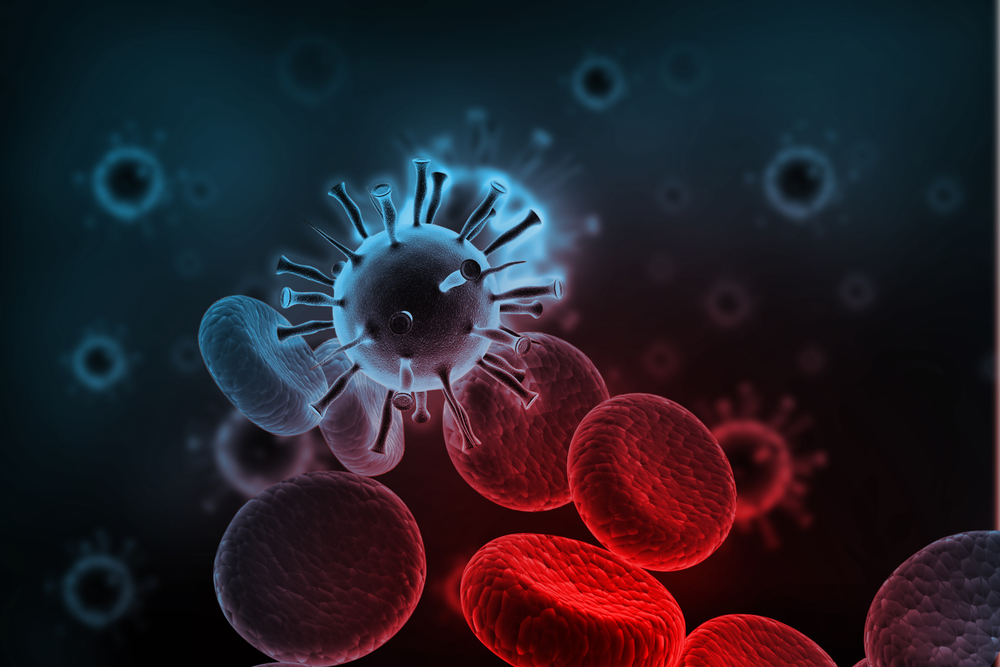
Cruise ships, nursing homes, and daycare centers are common breeding grounds for norovirus, a contagious stomach bug that infects 685 million people around the world each year. Despite its prevalence, norovirus–which has no specific treatment and is particularly dangerous in infants and the elderly–has received surprisingly little attention from researchers. In a review article published November 22 in Trends in Molecular Medicine, Washington University School of Medicine scientists and colleagues at the University of Michigan Medical School discuss what we know about the virus.
1. People can shed norovirus for months.
Norovirus has a high tolerance for disinfectants and with an average 1.2-day incubation period, it can spread quickly. Although symptoms such as abdominal pain, nausea, vomiting, and diarrhea typically resolve within 1-4 days, it is also possible for a person to shed the virus before symptoms appear and after their resolution. Viral shedding can occur for up to a few months in healthy individuals and for years in immunocompromised patients. The severity of symptoms does not correlate with Norovirus shedding, which makes protection against the virus rather difficult.
2. In a norovirus hot zone? Wash your hands.
Norovirus thrives in crowded public areas. Outbreaks spread when people eat or drink contaminated food, touch infected surfaces, or come into contact with someone shedding the virus. “Norovirus is extremely contagious and so washing your hands frequently is important,” says review co-author Megan Baldridge, a physician studying pathogens and the microbiome at the Washington University School of Medicine in St. Louis. “If you start to feel symptoms, avoid preparing food for other people and be careful to clean any surfaces that might be contaminated with bleach.”
3. Some people are more susceptible to norovirus than others.
There are many different types of norovirus and people can be infected multiple times during their lifetimes. The infection is different for each species that is infected by the virus and how humans react to the virus is dependent on their genes. “Healthier people may get the virus and have uncomfortable, unpleasant symptoms for a few days, but those symptoms will resolve quickly,” Baldridge says. “What can happen with people who are immunocompromised is that they can have a chronic debilitating infection that can be highly detrimental.”
4. Norovirus can trigger other gut problems.
Norovirus has been suggested as a possible trigger for other gut diseases, including irritable bowel syndrome (IBS) and inflammatory bowel disease (IBD). Under certain conditions, norovirus infection may also alter normal resident intestinal bacteria and allow other infections to occur. Although there is much research to be done regarding the causes of different gut diseases, we know that various pathogens can affect how the virus reacts and these reactions may trigger other intestinal problems. “We’re just starting to understand how there’s a very complex interplay between norovirus infection and all the other different pathogens and commensal bacteria that could be present,” Baldridge says. “These factors likely have very complex interactions with the gut.”
5. There is no vaccine, but new strategies are on the horizon.
Vaccine and treatment research has been limited because of a lack of understanding of norovirus within humans, but recent discoveries in mice have identified that certain biological factors can slow down or kill the virus. “Up until now vaccines have exclusively been using virus-like particles, but some new developments may make it possible to generate a live attenuated vaccine, which is pretty exciting,” “Baldridge says. “Having animal models and cell culture models to grow the virus and study how it acts a little more closely will help us better understand the virus and also think more about vaccination strategies.”




